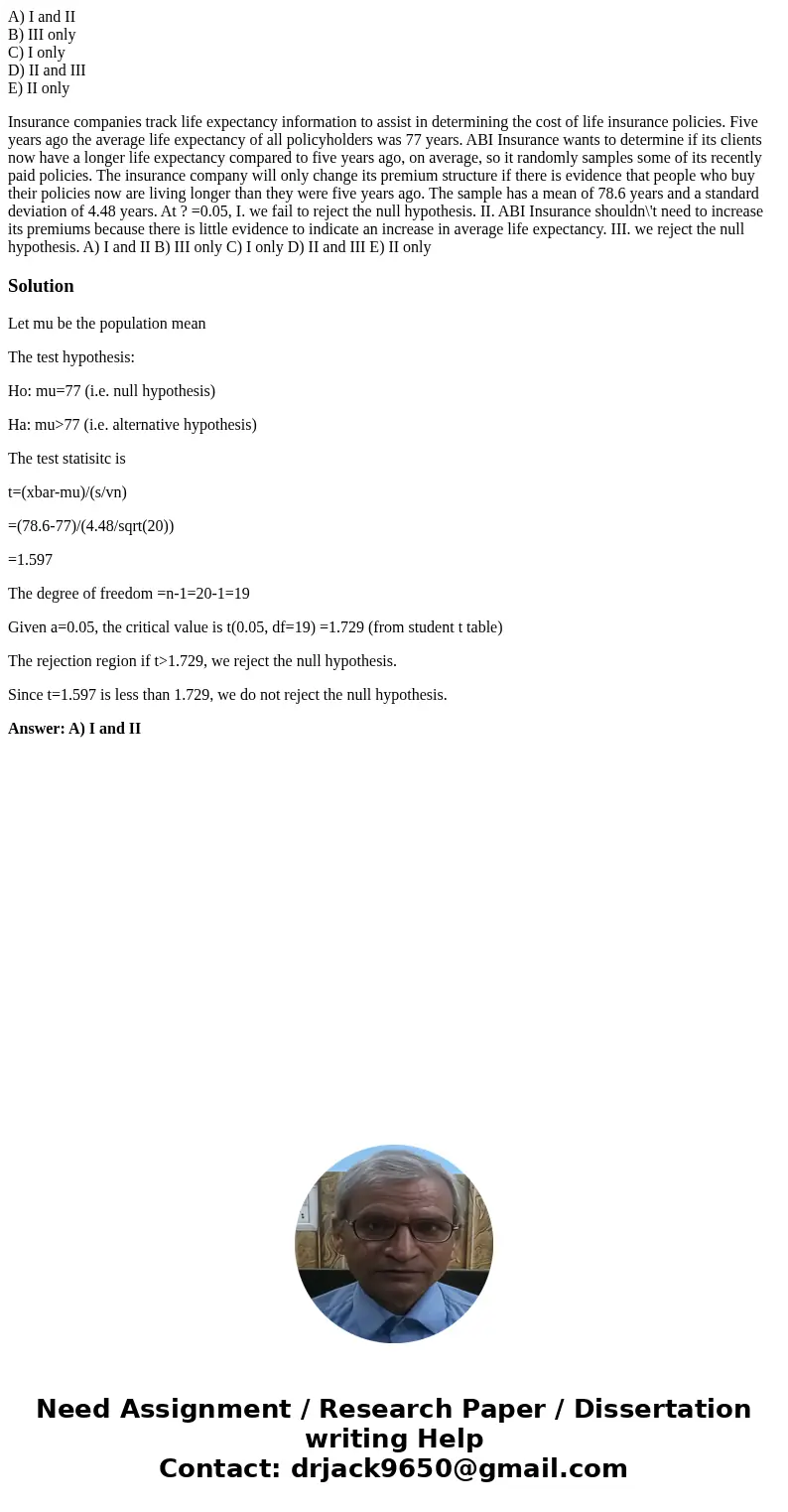A) I and II
B) III only
C) I only
D) II and III
E) II only
Insurance companies track life expectancy information to assist in determining the cost of life insurance policies. Five years ago the average life expectancy of all policyholders was 77 years. ABI Insurance wants to determine if its clients now have a longer life expectancy compared to five years ago, on average, so it randomly samples some of its recently paid policies. The insurance company will only change its premium structure if there is evidence that people who buy their policies now are living longer than they were five years ago. The sample has a mean of 78.6 years and a standard deviation of 4.48 years. At ? =0.05, I. we fail to reject the null hypothesis. II. ABI Insurance shouldn\'t need to increase its premiums because there is little evidence to indicate an increase in average life expectancy. III. we reject the null hypothesis. A) I and II B) III only C) I only D) II and III E) II only
Let mu be the population mean
The test hypothesis:
Ho: mu=77 (i.e. null hypothesis)
Ha: mu>77 (i.e. alternative hypothesis)
The test statisitc is
t=(xbar-mu)/(s/vn)
=(78.6-77)/(4.48/sqrt(20))
=1.597
The degree of freedom =n-1=20-1=19
Given a=0.05, the critical value is t(0.05, df=19) =1.729 (from student t table)
The rejection region if t>1.729, we reject the null hypothesis.
Since t=1.597 is less than 1.729, we do not reject the null hypothesis.
Answer: A) I and II

 Homework Sourse
Homework Sourse